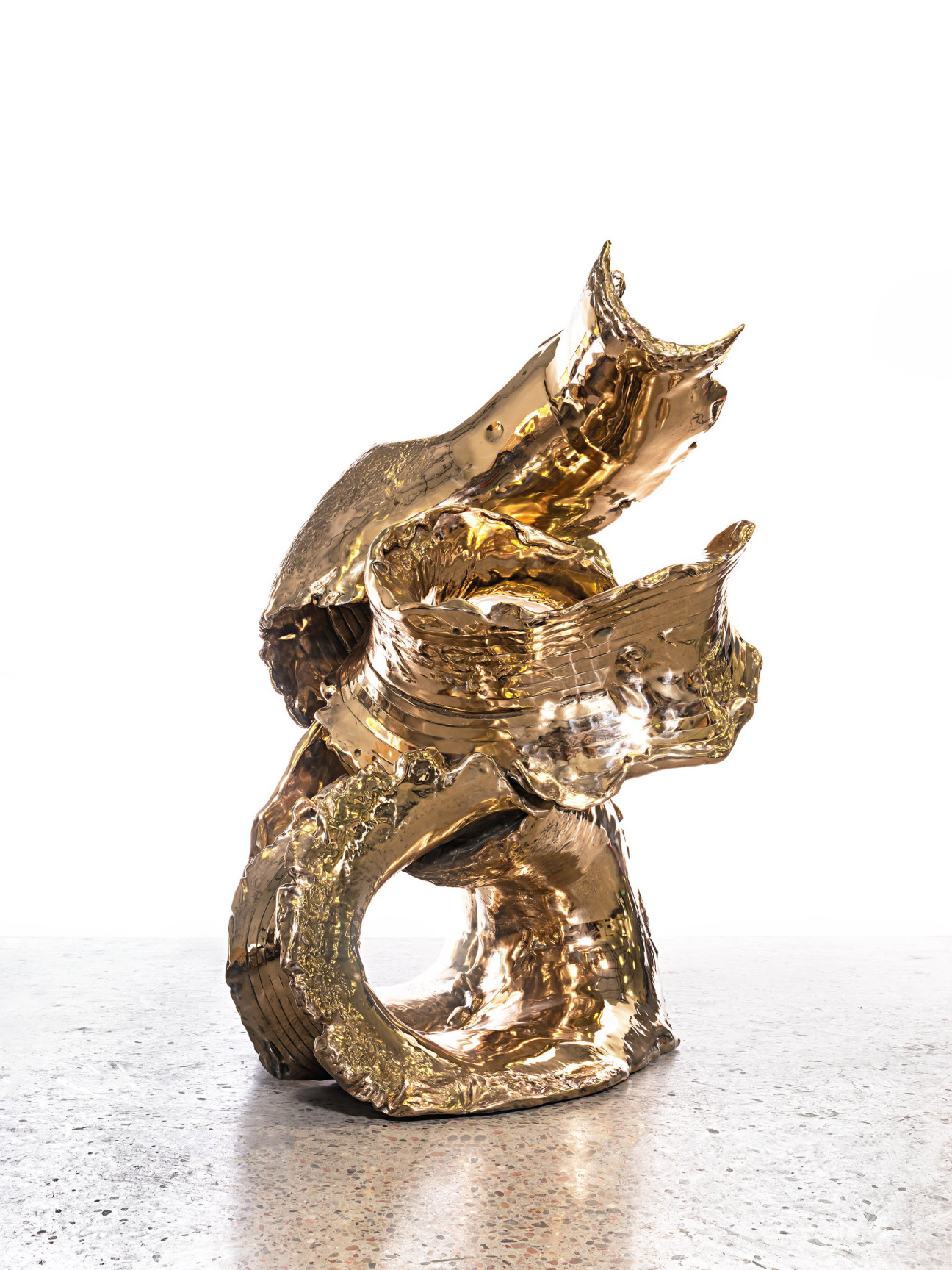
Lynda Benglis likens her work to an open system, a setup that both responds to and challenges its surroundings. Since the 1960s, the Louisiana-born artist, now 82, has been circling questions of gender representation and the bounds of painting and sculpture in her provocative practice. Though she builds off figures like Jackson Pollock, Benglis traces her first conceptions of what an artist is to a figure much closer to home.
CULTURED: Is there a moment that shaped your understanding of what an artist is?
Lynda Benglis: My mother was an artist. She drew portraits of her children early on, but then she had a nervous breakdown and my father committed her to shock treatments. All I know is that the nurses put her in the hospital and tried to force her to draw, thinking that she would be better off if she drew. But what she did do was make aluminum trays herself, etched them. My father built her a studio. And she etched trays with acid, I believe, and bent the trays regularly with a wave approach around the aluminum.
CULTURED: Did you realize you were an artist by watching her make work?
Benglis: Well, I realized, I think more than anything, her frustrations. But also she was a great mother. I realized that I didn't understand what it really truly meant back then. It was very difficult. Women artists had to give up a lot, had to play the role of an artist. I began to mock what women were supposed to do, what women were told to do, women as objects, Marilyn Monroe, all of this. I lived through all of this contradiction and support. At that time, you really had to choose.

CULTURED: Was there a point at which you pursued art at the expense of other things?
Benglis: Oh, yes, I think so.
CULTURED: And can you describe that period?
Benglis: Well, it was horrific. It was also heroic. I felt I had to rise above all interest and just create what I felt I had to do. It was a contradiction of the biology, yet going with it: streaming into it, flowing into it, piling into it, fighting. It was a wrestle. It was a sword fight. It was peaceful. It was soothing. Everything at once came to me.
CULTURED: How old were you when this began?
Benglis: After graduation, I think maybe in high school.
CULTURED: And fast forwarding a little while, when did you feel like your practice really found its audience?
Benglis: Paul Brach came to me; he was head of CalArts. I was already teaching in college and visiting in New York and in Rochester, the school there. He said, "I want to invite you to CalArts because you're really doing something," as if Miriam Schapiro and Judy Chicago weren't. But I realized that, yes, I was doing something differently, and I was more involved with my resources, which were logic. I had the best logician in the U.S. teaching me … Jason Xenakis. He encouraged me to go on with logic because there were very few women in philosophy, but I decided that the art category was one way of expressing myself in a way that was natural to my being.

There was that sense of, Okay, eureka, it's true. Because I love California. When Paul Brach invited me, I thought that was very interesting. All the men were so challenged that when I went to give a talk, there were no women but one, Suzanne Lacy, in the audience. I found that amazing that the women boycotted me because of what… Because I was invited by the husband of Miriam Schapiro. They were always hostile toward me when I went to CalArts. They weren't nice, but I had the largest class, mixed, women and men, when I was there.
I can say I enjoyed it and decided to stay in Los Angeles for seven or eight years and had a studio there. There were other artists that went to the school: Pat Steir, for instance. Pat Steir sublet my studio there, and she was going at that time with somebody that was my neighbor. I liked LA because I thought it reminded me basically of every town in the U.S. New York was something else. New York was part European.
I was there when I was 11 years old with my grandmother … and we stayed in a hotel that was a shipping hotel with boats, ships. I was involved with the water and the ocean and grew up back in Lake Charles with a motorboat. I went, alone, all the way down the 45 miles and more from Lake Charles through the intracoastal canals, down to the Gulf. I had two five-gallon gasoline containers in my motorboat and went down there and then filled them up. I had to always prove myself as being a multitasker, doing different things.

CULTURED: Is there a moment in your career when you thought about leaving your practice behind? And why didn't you?
Benglis: I never thought about leaving it because I always look for something to fulfill my wanderings. Mostly, I'm a wanderer and a logician. There's a closed system, and there's an open system. I use both. Logicians and scientists use the open system, and I'm attracted to scientists. I always was and am. I love artists too. I think it's the same game. Both them and artists think about themselves intuitively with open and closed systems you have to build. You have to build on ideas.
CULTURED: What advice would you give to a young artist who looks up to you?
Benglis: Well, don't look up. Look inward. Think of open concepts that haven't been done and think of closed concepts that have been done.
This interview is part of a series of conversations with female artists over the age of 75. To read more, see this article on Pippa Garner, the artist who's held a zany mirror to American consumerist culture for over 50 years; or this story on Sonia Gomes, who left a legal career to become an artist at 45.










 in your life?
in your life?

